

Citation : Ayoe Hoff, Hans Frost. Final fishery scale models and results of scenarios (baseline, alternative management scenarios and DMS scenarios), 2019
Discardless has included bioeconomic model projections of potential economic outcomes of the Landings Obligation (LO) for selected case study fisheries.
Relevant bioeconomic management assessment models have been selected for the included case studies. The following case studies have been analysed (paranthesis displaying the bio-economic model used):
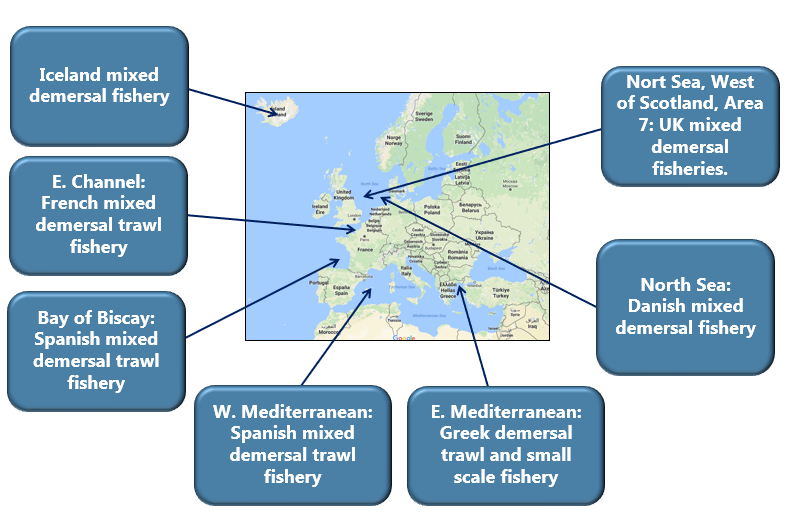
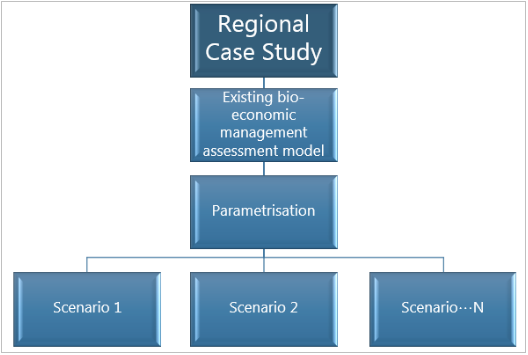
Bioeconomic management assessment models were chosen on the basis that they were already operational (i.e. had been used in other applications previously to Discardless) and as such thoroughly tested and documented in peer-reviewed journals, to secure a high scientific standard of the models and the expected assessment results. The model were parametrised based on the newest available data for each fishery, and extended, if neccesary, to be able to model the LO and expected exemptions and mitigation strategies, for each included case study fishery.
The selected scenarios all include two benchmark scenarios:
Secondly a number of relevant scenarios were defined for each case study based on either expectations on or direct knowledge about how the LO, and possible exemptions and mitigation strategies will be implemented in the specific case study. And finally, each case study has assessed and applied outputs from Work Packages (WPs) 3-7, to the extend possible given the bio-economic model in use.
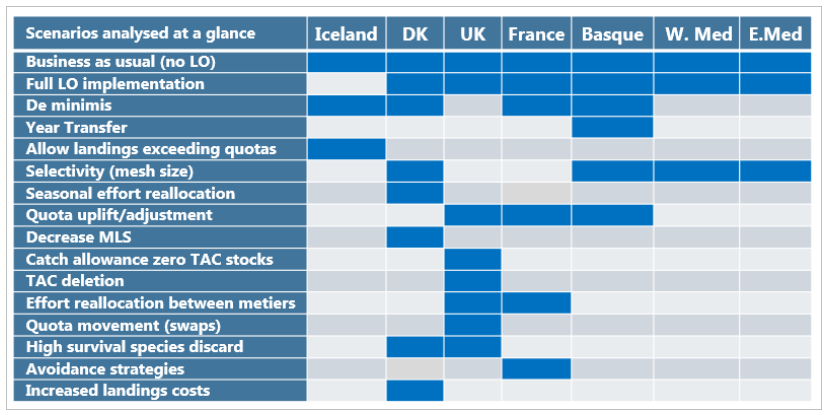
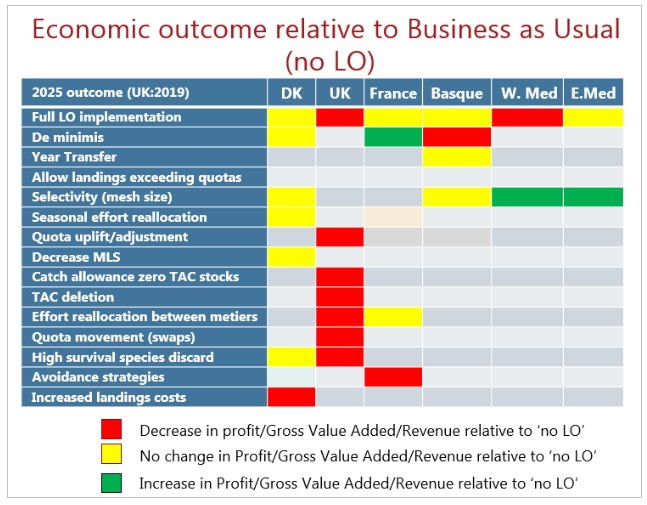
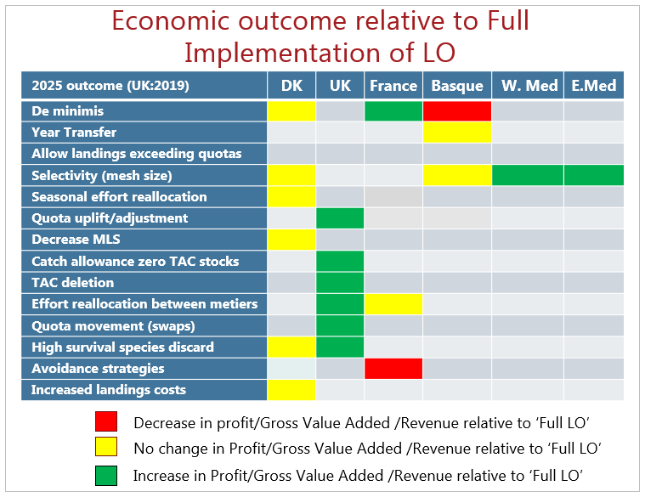
The outcomes of the simulations are mixed and indicate that the economic effects of the LO for affected fishing fleets depends on both the fishery in question, on the management system on which the LO is superimposed, and on applied exemptions and mitigation strategies.
A full implementation of the LO with no quota-uplifts and no exemtions or mitigation strategies applied will in the long run lead to on the average (average over all fleet segments considered in a given case study) reduced or at best similar economic outcomes, compared to the situation with no LO, for the considered fisheries. Application of mitigation strategies and exemptions improves this results for most considered cases. When individual fleet segments are considered the picture becomes even more complex as it is in most case studies predicted that some fleet segments will profit while others will loose out given the LO, both without and with added exemptions and/or mitigation strategies. Thus, in all it is concluded that the economic effects of the LO for affected fisheries are, according to model predictions, very varied, going from losses to actual gains. And that the effects to a high degree depends on (i) the management system on which the LO is superimposed, and (ii) on which and how exemptions and mitigation strategies are implemented.